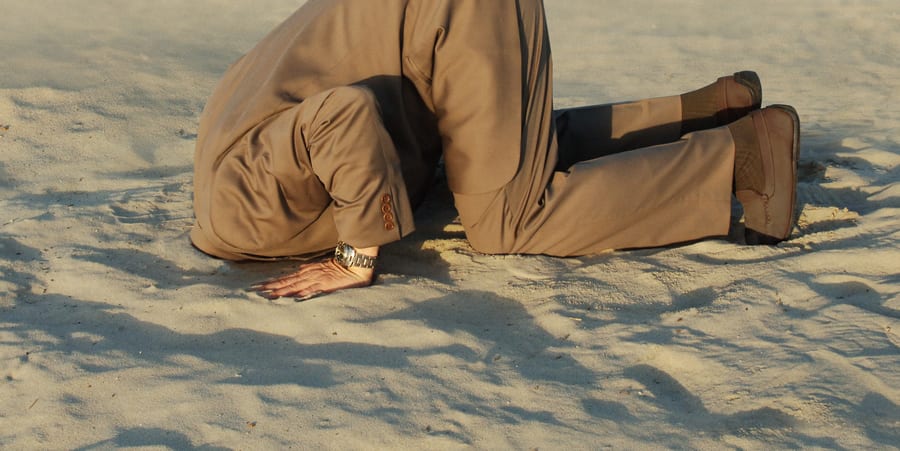
Womack - sustaining gains must become a focus of management
WOMACK'S YOKOTEN – In our lean journeys we spend so much time on improvement (kaizen) and innovation (kaikaku) that we often forget to address the issue of how to maintain our gains. Do you know iji? Perhaps you should.
Words: Jim Womack, Founder and Senior Advisor, Lean Enterprise Institute
Thirty years ago I first encountered the idea of kaizen by reading Masaaki Imai's book of the same name. (Kaizen, Random House, 1986, and still available.) It sounded wonderful: Identify an improvement opportunity, form a team, and conduct the improvement over a short period of time (commonly five days or less), largely outside the rules of an organization's normal management. Then do more kaizen. Forever. A wonderful way to perpetually overcome the inertia that seemed to block improvement in so many large organizations.
The book had two curious diagrams in the first few pages, on "Japanese perceptions of job functions" versus "Western perceptions of job functions". (Reproduced below.) These suggested that kaizen was the missing element, the formerly secret sauce, lying between "innovation" and "maintenance" – which the Japanese call, respectively, kaikaku and iji. I was sold and much of what I wrote in the following decade (in The Machine That Changed the World and in Lean Thinking) was in praise of kaizen, with an occasional endorsement of kaikaku as well. Maintenance, which sounded both boring and hard, disappeared from my consciousness. Surely managers would sustain what they had just improved!
[caption id="attachment_2064" align="alignnone" width="527"]

Japanese perception of job functions[/caption]
Japanese perception of job functions
[caption id="attachment_2065" align="alignnone" width="511"]

Western perception of job functions[/caption]
Western perception of job functions
Meanwhile, as I scribbled on many topics, a face on a t-shirt someone had given me and that I had framed and installed above my writing table glowered at me with the admonition: "Without standards there can be no kaizen." It was Taiichi Ohno, the architect of the Toyota Production System. I enjoyed having him around to keep me company and spur me on, but I thought he was just talking about the need for standardized work and workplace organization. I never made the connection between what he was actually saying and what I was writing.
Over the years, as the world embraced kaizen, I began to notice that hardly anything once improved stayed improved. The saw-tooth pattern of an improvement in performance through kaizen followed by rapid regression to the previous level of performance was visible whenever anyone bothered to chart progress over time. The long-term trend in performance was usually a horizontal line at best, sometimes even with a downward slope. So I began to think about this problem and how to countermeasure it.
This eventually led me back to the boring concept of maintenance, captured by the Japanese word iji. Like yokoten, iji is an example of how a common Japanese term can be given a subtly different, lean meaning. Yokoten, as commonly used, refers to the spread of anything, often an idea or concept, good or bad. But in lean use (and in this column of that name) it specifically means the spread of tested lean practices to an ever-wider range of activities. Similarly, iji as "maintenance" sounds like advice to routinely oil one's machinery in the factory or periodically do some 5S in the office. But for Imai and Toyota it meant front-line managers and work teams steadily maintaining the current standards of performance for every process by intervening quickly to prevent them from deteriorating. The distinction between inputs – standardized work, 5S, etc. – and outputs – a consistent level of performance – is critically important and the point I had been missing. Let me explain.
For any value-creating activity at a given point in time there are levels of performance regarding quality, productivity, on-time delivery, cost, safety, etc. These are the levels that the process achieves while being operated in the current way, usually measured on a rolling basis for a few months. Note that these are not aspirational goals. They are not what the process ought to achieve or can achieve in theory, but what it actually achieves now. The baseline. Ohno's "standards".
Kaizen is about raising the baseline by intervening in the process or value stream to change the work, improve the results, and create new, higher performance standards. And kaikaku is about dramatically improving the results by radically altering the work and the process to achieve a lean leap in performance and still higher standards. (Moving from process village layouts to single-piece flow in cells in only a few days was and is a common kaikaku activity in the Lean Community, as described in my recent column "The Pace of Change: Evolution or Revolution?", March 2016.)
But how can a management team maintain performance? How can it practice iji? There has been a movement across the Lean Community in recent years to deploy daily management, which in theory is a daily, continuous look at standards for processes to see if they are being maintained. And I have been on many walks with management teams in many organizations to review daily production or daily quality or daily whatever-standard-is-important boards. (Commonly called "board walks" out loud and "bored walks" sotto voce.)
What I commonly see is that the presence of the board and the act of the daily walk are accepted as evidence that daily management is being performed. Yet what the boards almost always show is that things are going wrong all the time and performance standards are not being maintained.
I have also noticed that there is no mechanism for immediately addressing the problems and returning performance to the standard. (The tip-off is that the same problems appear on the boards day after day.) Few organizations seem to have effective countermeasures for a failure to meet a standard. This requires assigning responsibility during the work to someone – line or staff – to find the root cause, devise a countermeasure, and test it quickly, with an agreed report-back date and an understanding that others touching the process need to cooperate with this activity and make it a first priority. This is pretty simple, but it takes management time (always in short supply), practice and dedication. Otherwise standards continue to decline and kaizen is done on top of chaos – in short, "there can be no kaizen," as the print on my t-shirt states.
This was Ohno's broader point: There must always be a clear standard based on actual performance (without which there can be no sustainable kaizen to raise the standard) and there must always be a rapid response to a failure to meet the standard so that over time the standard is actually maintained. This is the core value-creating work of front-line management.
So, should lean practitioners immediately suspend all kaizen until their organization is able to maintain the performance standards for every process? That is, until they achieve basic stability? Not a bad idea, and I hope some readers will try this approach. The alternative is to create an effective management mechanism for iji as part of every kaizen, realizing that the real objective is to maintain the gain over time rather than achieve a momentary gain. But this is not a trivial task. Again, it takes commitment and practice, perhaps spurred on as a hoshin objective for an entire organization. What we now know is that the only way to attain a stable standard for baseline performance before kaizen or a higher-level at the conclusion of kaizen (and kaikaku too) is to embrace iji as a core management practice to sustain our gains.
THE AUTHOR

Management expert James P. Womack, is the founder and senior advisor to the Lean Enterprise Institute. The intellectual basis for the Cambridge, MA-based Institute is described in a series of books and articles co-authored by Jim himself and Daniel Jones over the past 25 years. During the period 1975-1991, he was a full-time research scientist at MIT directing a series of comparative studies of world manufacturing practices. As research director of MIT’s International Motor Vehicle Program, Jim led the research team that coined the term “lean production” to describe Toyota’s business system. He served as LEI’s chairman and CEO from 1997 until 2010 when he was succeeded by John Shook.
Read more


FEATURE – In the age of complexity and disruption, flowing value to customers as quickly as possible is critical. The new Toyota Flow System strives to address this issue.


FEATURE – There are five dimensions to a lean transformation – purpose, process, people, management behaviors, and mental models – and it is the role of leadership to adjust its stance to each of them.


FEATURE – Innovation is a process and lean thinking allows that process to take place, by empowering everyone in the company to think creatively about solving customer problems.


COLUMN – Digitalization is now on the agenda of executive teams and is encouraging organizations to review their business models. But how does IT fit into the picture? What is its role? How can lean help?

